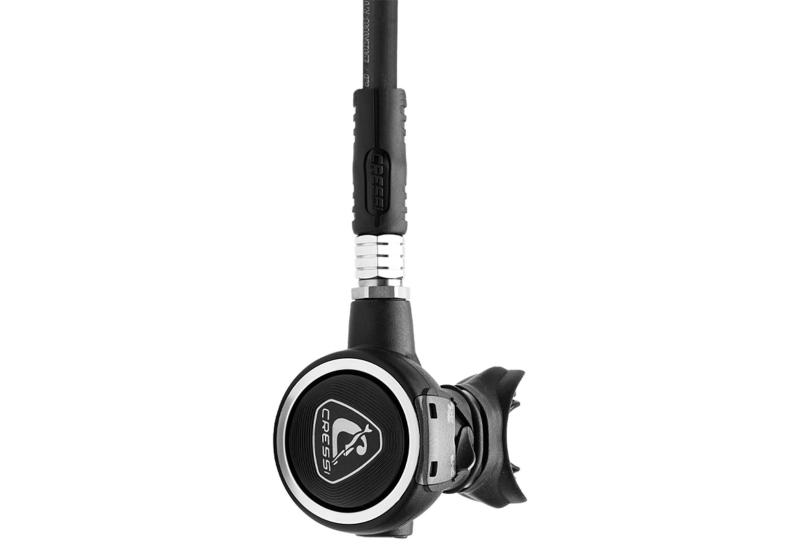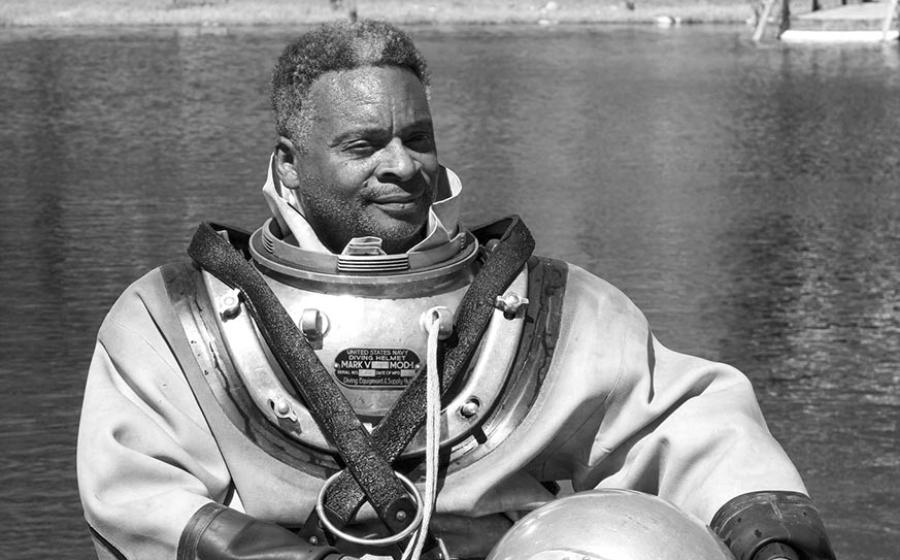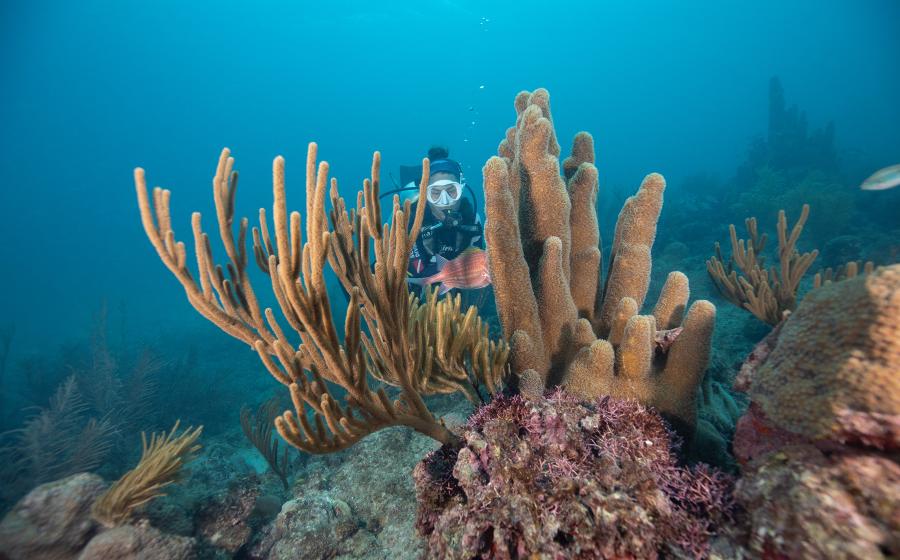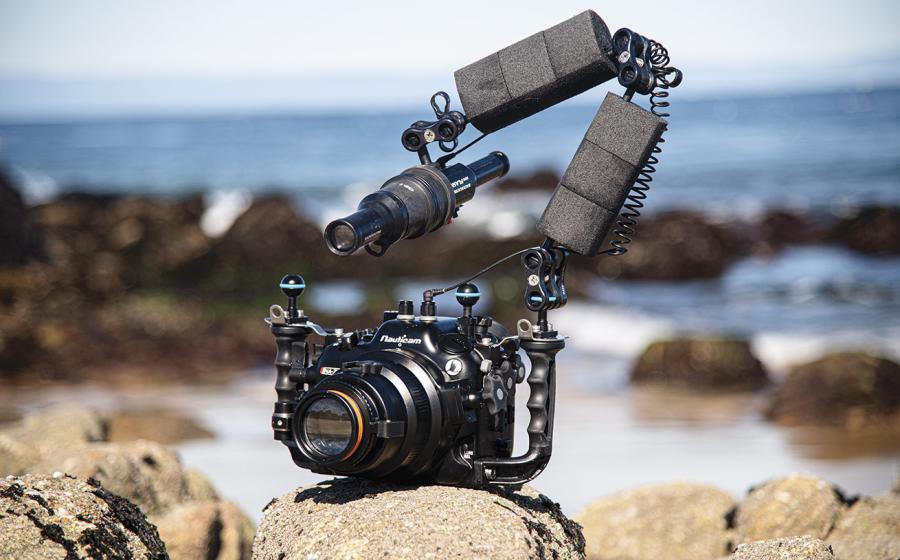A Gear-Buying Guide for Scuba Diving Open-Water Students
Ready to sign up for your open-water scuba diving class? That’s great! Your local dive shop can rent you the gear you’ll need to learn how to dive, but we recommend you purchase your own personal mask, snorkel, fins and wetsuit. That way, you can be sure you’ve got a proper fit and can get comfortable using your own gear. Your first dive gear does not have to be expensive, but fit is critical, and so are some features. We’ve put together this handy guide so you can purchase the gear that’s best for you.

Courtesy CressiWhen you're underwater looking at amazing sights, your scuba mask needs to fit you well. Leaky masks are annoying and ill-fitting masks can hurt your face.
SCUBA DIVING MASKS
Why You Need It: It’s your window to the magical underwater world! The mask creates an air space in front of your eyes that allows them to focus under water. The nose pocket allows you to equalize the air pressure in your mask as you go deeper.
Get a Good Fit: No two faces are alike, so mask fitting is crucial. If you can, use the regulator you’ll be renting when trying on masks as a regulator can affect the mask’s seal. With your regulator and snorkel in place, tilt your head back and rest the mask in place without inhaling — look for any gaps between the skirt and the skin. If there are any, put the mask back on the shelf or hook and try another one.
Next, make sure the mask is comfortable — there’s nothing worse than diving with a mask that digs into the bridge of your nose, eyebrows or upper lip. Make sure you can reach around the second stage regulator to pinch your nose.
Last, if your retailer will let you take it into the pool, take the plunge and make sure the mask doesn’t leak and that there are no issues with comfort. If you can’t do an in-water test, check the store’s return policy.
You'll find a whole range of options on masks, including side, top and bottom panes for a wider field of vision. Some also have purge valves for venting any water that leaks in, and others have quick strap adjustments. These options (and a range of color schemes) are a matter of personal preference — just make sure the mask you choose fits right.
Our Best Shopping Tip: Clear or light-colored mask skirts let more light in and are generally more comfortable for new divers. Also, even though masks straps are far more comfortable these days than in years' past, you may want to swap yours out with a neoprene mask strap. Your dive retailer will most likely stock a variety of these.
Cost: From $50 to $200.

Sport Diver MagazineThe humble scuba snorkel is an important piece of equipment every diver should have. Really.
SCUBA DIVING SNORKELS
Why You Need It: Snorkels are a favorite for divers because they help us save air at the surface, and we can also use them when we’re snorkeling, a fun pastime for many divers.
Get a Good Fit: You want a mouthpiece that feels good in your mouth and breathes dry and easy. Also important: how the snorkel attaches to your mask. Look for a durable, yet simple and easy-to-operate attachment.
A contoured large bore tube provides ample airflow, while a lower purge valve enables water to be quickly expelled when necessary. Flexible tubing improves fit and comfort and allows the mouthpiece to hang out of the way when breathing off your regulator. An adjustable snorkel keeper is always included.
Our Best Shopping Tip: Make sure the snorkel mouthpiece is comfortable in your mouth. No sense attaching one to your mask if you’re never going to use it because you don’t like the way it feels when you’re breathing through it.
Cost: From $25 to $90.

Sport Diver MagazineWhen choosing a pair of scuba fins, don't be tempted to buy what looks cool or has nice color accents. Make sure they're right for the kind of diving you'll be doing.
SCUBA DIVING FINS
Why You Need Them: Even though it's not competitive swimming, when you are scuba diving, your kicks will move you through the water. Fins can help make your kicking — whether you prefer flutter or frog — more efficient.
Get a Good Fit: Choosing the right pair is important to prevent muscle fatigue and cramping. When trying on fins, look for a snug fit that doesn't pinch your toes or bind the arches of your feet. If you can't wiggle your toes, the fins are too small. Long, stiff fins look cool, but they require more kicking effort and can put stress on weak muscles. More flexible fins are much easier to kick and often produce more propulsion for the amount of effort expended.
Closed-heel foot pockets are worn barefoot. They are thin and flexible and very comfortable, but proper fit is critical. Open-heel fins are worn with a bootie. They are more forgiving of fit as they can be adjusted with a heel strap. Barefoot fins can be nice in tropical waters because you may not need need booties to keep you warm. However, if you do tend to get cold, open-heels may be a good choice because you wear them with booties or a pair of nylon or neoprene "socks."
Our Best Shopping Tip: Easy-adjust buckles with rubber straps are standard on open-heel fins. However, divers usually replace with stainless-steel spring straps or bungee straps that eliminate the need to readjust straps. Many manufacturers are now including this feature on the fins they make. You may like that feature if you plan to do a lot of diving.
Cost: $65 to $200.
SCUBA DIVING WETSUITS
Why You Need It: A wetsuit is a neoprene-insulating suit, and it works by trapping a layer of water between your body and the suit. The tighter the suit fits, the thinner the layer of water — and thus, not as much heat is “robbed” from your body, and this smaller amount of water doesn’t take as long to heat up.
Get a Good Fit: As long as a wetsuit fits correctly, it will do the job, so fit is crucial. Form-fitting exposure suits are usually made of foam neoprene rubber (wetsuits) or spandex-like materials (skins), sometimes with a fleece lining. When you put on a wetsuit, your body temperature warms the gas bubbles in the neoprene, which act as insulation. This, combined with a snug fit, minimizes the amount of water that enters the suit and keeps body heat from escaping.
There are basically two types of stitching being used in wetsuits: the flatlock (also known as flatseam) stitch, and the blind-stitch, which is used in conjunction with a gluing process.
The flatlock stitch is commonly found in warm-water suits that are 3mm thick and less. This stitching method either butts or overlaps two pieces of material and then sews them together with multiple needles in a series of three or four rows of stitching, creating a very strong seam. The flatlock stitch is easier and faster to make, so it tends to be less expensive than a blind-stitch, and it allows more stretch to the seam, which can be helpful with today’s hyper flexible neoprene. It’s also a flatter seam, hence the name, so it feels a lot more comfortable against bare skin.
The glued and blind-stitched seam tends to be found on cold-water suits 3mm and thicker, primarily because this stitch doesn’t leak. The first step in this process involves gluing the suit’s neoprene panels with two or three coats of neoprene cement. The second step is sewing the seams so they hold together. This is done with a “blind-stitch,” so-named because the needle penetrates only half the thickness of the material. This gives a seamless appearance on one side of the suit, unless it has been “double blind-stitched,” where this half-sewing is done on both sides of the seam.
Bright colors and graphics aren't necessary but do make you more visible to other divers.
Having trouble wriggling into your wetsuit? Try wearing a dive skin under your wetsuit — it can be much easier to slide your wetsuit over a thin dive skin. Or try the plastic bag technique — put a plastic bag over your foot before you put it in the leg hole of your wetsuit. Once your foot is through, repeat with the other leg. Do the same with your hands and arms. Or in a pinch, use baby shampoo or water as a lubricant to help get your suit on. Just splash water or rub a bit of baby shampoo on your legs and arms.
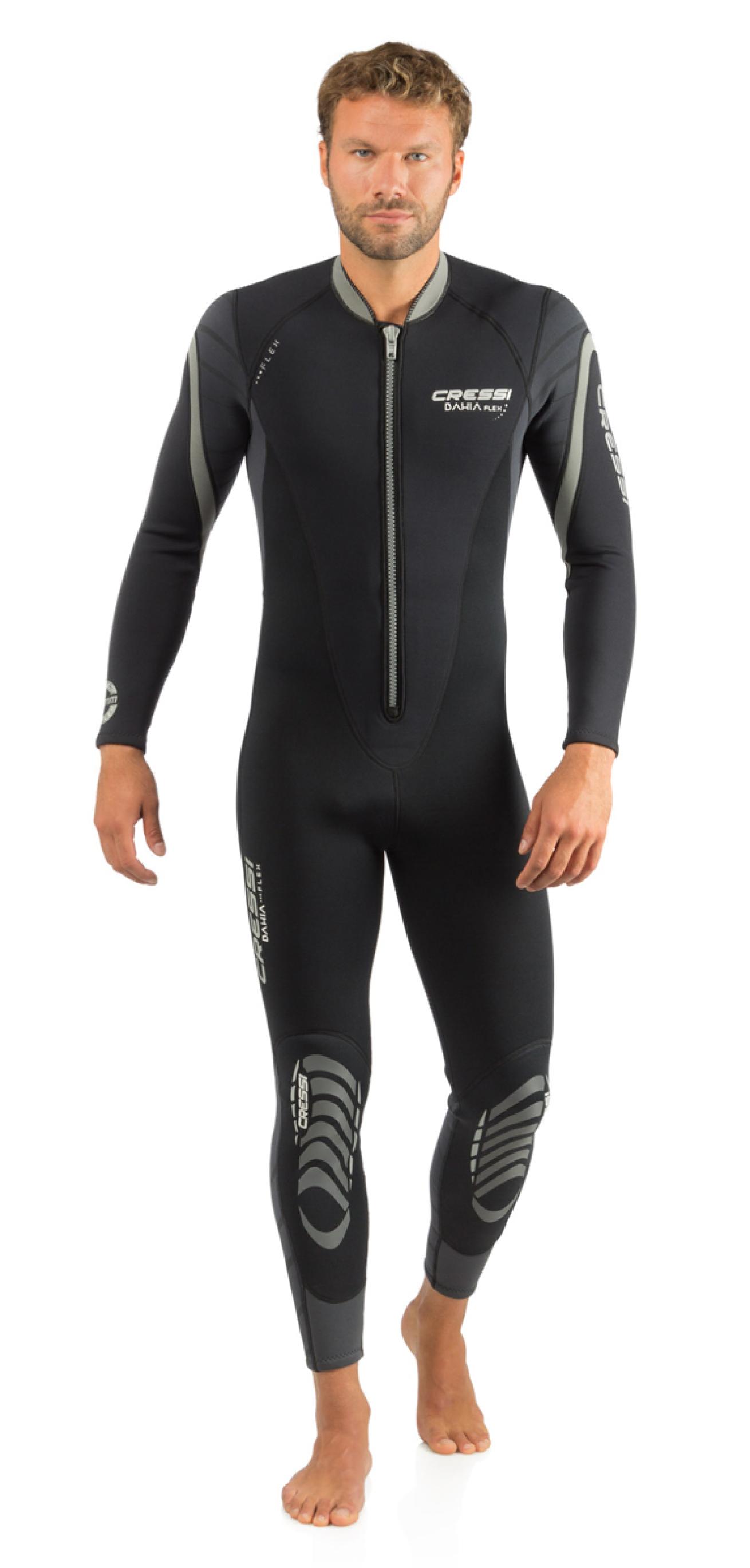
Courtesy CressiFor a wetsuit to do its job — which is to keep you warm — fit is crucial. Take the time to try suits on in the store.
It’s important to know the water temperature where you will be diving in the suit. There is constant heat loss through the neoprene if the water you’re diving in is cold. And while the heat loss will be more gradual, even immersion in tropical water will pull heat from your body.
How thick does your wetsuit need to be to keep you warm? The definition of cold and how it affects someone differs from diver to diver.
This chart gives you an estimate of what thickness your wetsuit should be for various ranges in water temperature.

Sport Diver MagazineWater temperature will dictate what thickness your wetsuit should be.
Our Best Shopping Tip: Don’t buy a suit that's too loose. Gaps at the arm, leg, crotch and neck allow water to circulate, which will end up making you feel cold, even in tropical water.
Cost: Wetsuits, drysuits and skins range from $90 to more than $1,000.
Learn more about the Cressi products featured in this article on Cressi's website.


